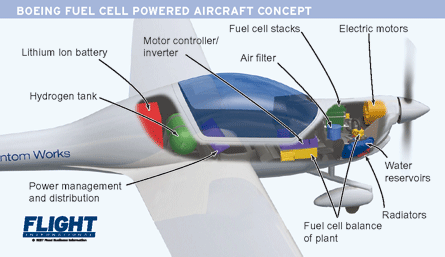Team envisages using technology in small manned and unmanned air vehicles
A fuel-cell and battery-powered motor glider capable of cruising at 54kt (100km/h) is to fly this year in Spain under a project led by Boeing's Madrid research centre.
The experimental powered glider, a modified 16.3m (80ft)-wingspan Diamond Aircraft Dimona, will use its lithium ion batteries for take-off and landing, but use a hydrogen-fuelled proton exchange membrane (PEM) fuel cell for the cruise. It has no conventional engine on board.

Systems integration testing for the Boeing Phantom Works Fuel Cell Demonstrator Airplane project is under way in preparation for ground testing.
"Boeing does not envision that fuel cells will provide primary power for future commercial passenger airplanes, but demonstrations like this pave the way for potentially using this technology in small manned and unmanned air vehicles," says Francisco Escarti, managing director of Boeing Research & Technology - Europe, which is part of its Phantom Works research organisation.
Boeing is also considering solid-oxide fuel cells for auxiliary power units in 10 to 15 years. The PEM fuel cell for the demonstrator is provided by UK company Intelligent Energy. The project also includes companies from other European countries including Austria, France, Germany and Spain.
Madrid-based aeronautical services consultancy Senasa has provided a test pilot and flight test facilities.
Source: Flight International























